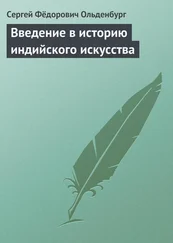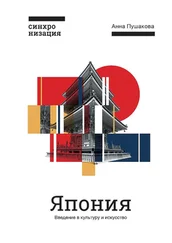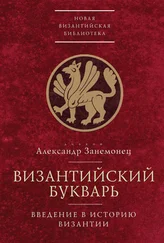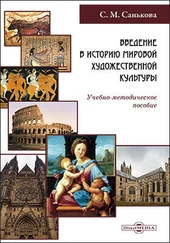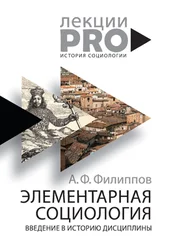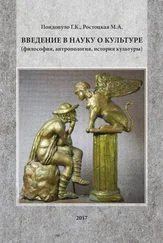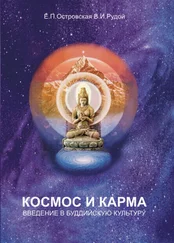Асатрян Г.С. - Введение в историю и культуру талышского народа
Здесь есть возможность читать онлайн «Асатрян Г.С. - Введение в историю и культуру талышского народа» весь текст электронной книги совершенно бесплатно (целиком полную версию без сокращений). В некоторых случаях можно слушать аудио, скачать через торрент в формате fb2 и присутствует краткое содержание. Жанр: Старинная литература, на русском языке. Описание произведения, (предисловие) а так же отзывы посетителей доступны на портале библиотеки ЛибКат.
- Название:Введение в историю и культуру талышского народа
- Автор:
- Жанр:
- Год:неизвестен
- ISBN:нет данных
- Рейтинг книги:4.33 / 5. Голосов: 3
-
Избранное:Добавить в избранное
- Отзывы:
-
Ваша оценка:
- 80
- 1
- 2
- 3
- 4
- 5
Введение в историю и культуру талышского народа: краткое содержание, описание и аннотация
Предлагаем к чтению аннотацию, описание, краткое содержание или предисловие (зависит от того, что написал сам автор книги «Введение в историю и культуру талышского народа»). Если вы не нашли необходимую информацию о книге — напишите в комментариях, мы постараемся отыскать её.
Введение в историю и культуру талышского народа — читать онлайн бесплатно полную книгу (весь текст) целиком
Ниже представлен текст книги, разбитый по страницам. Система сохранения места последней прочитанной страницы, позволяет с удобством читать онлайн бесплатно книгу «Введение в историю и культуру талышского народа», без необходимости каждый раз заново искать на чём Вы остановились. Поставьте закладку, и сможете в любой момент перейти на страницу, на которой закончили чтение.
Интервал:
Закладка:
иранского языкознания. Новоиранские языки , том 5,
Москва: 91-175.
Погосян Г. (Хахбакян) (2011), “Некоторые документы по истории
окончательного присоединения Талышинского ханства к
Российской империи”, Регион и мир , № 1, Ереван. 2011.
114
Рисс П.Ф. (1855), “О талышинцах, их образе жизни и языке”,
Записки Кавказского отдела Русского Географического
Общества , Тифлис.
Рюмин В.А. (1923), Талышский край (Ленкоранский уезд) ,
Типография К.З. Ямпольского, Ленкорань.
Садегиния Х. (2007), “Роль талышей в истории Сефевидской
династии”, Асатрян 2007.
Серов С. (1990), “Здесь живут потомки мидян”, Наука и жизнь , №
7 [40].
Списки населенных мест Российской империи. Бакинская губерния
(1870), том 65, Тифлис.
Степанос Орбелян (1910), История области Сюник , Тифлис.
Стрейс Я. (1935), Три путешествия , Перев. Э. Бородиной,
Москва.
Трофимова А. Г. (1959), “К вопросу об этнографических зонах
Азербайджанской ССР”, Краткие сообщения Института
этнографии АН СССР , том 32, Москва.
Хафиз Абру (2007), Зайл-и джами' ат-таварих-и Рашиди , перев.
с персидского, предисловие, коммент., примеч. и
указатели Э. Р. Талышханова, Баку.
Чурсин Г.Ф. (1926), “Талыши (Этнографические заметки)”,
Известия
кавказского
историко-археологического
общества , Тифлис, том 4: 15-45.
Элиадэ М. (1999), Очерки сравнительного религиоведения , Москва.
Юзефович Т. (1869), Договора России с Востоком, политические
и торговые , СПб.
‘Abdolī ‘A. (1990), Tālešīhā kīstand? , Tehran.
—— (1999), “Tārīx va ǰoγrāfyā-ye Tāleš”, Gīlakān , Rašt.
Ahmadyān B. (2001), “Tāleš — velāyatī tārīxī”, Tahqīqāt-e Tāleš , N 1:
25-43.
Algar H. (2006), “Religions in Iran; Islam in Iran; Shi’ism in Iran Since
the Safavids”, Encycl. Iranica (http://iranica.com/articles/irani-ix
23-shiism-in-iran-since-the-safavids).
Amīryān B. (2005), Gūyeš-e tāleši-ye Anbarān , Tehran.
Amoretti B. A. S. (2008) “Sects and Heresies”, The Cambridge History of
Iran , vol. 4, Cambridge.
Arakelova V. (2002), “Three Figures from the Yezidi Folk Pantheon”,
115
Iran and the Caucasus , vol. 6/1-2: 57-74.
—— (2003), “The Siyah-Galesh and Deity Patrons of Cattle-Breeding
Iranian Peoples”, Iran. Questions et connaissances , vol. 3, Paris:
171-176.
—— (2003a), “Al (Spirit possessions) ― (Iran, the Caucasus, Central Asia
and Afganistan)”, Encyclopedia of Women and Islamic Culture ,
vol. 1, Leiden: 52-53.
—— (2006), “Some Natural Phenomena and Celestial Objects in the
Yezidi Folk Beliefs”, Iran and the Caucasus , vol. 10/1: 26-34.
—— (2007), “[Review of:] Kreyenbroek, Kh. Rashow, God and Sheikh
Adi are Perfect: Sacred Poems and Religious Narratives from the
Yezidi Tradition ”, Iran and the Caucasus , vol. 11/1: 141-148.
Arakelova V.; Omid P. (2006), “Phallic Objects from Ardabil”, Iran and
the Caucasus , vol. 10/2: 32-39.
Asatrian G. (2001), “Āl Reconsidered”, Iran and the Caucasus , vol. 5:
149-157.
—— (2002), “The Lord of Cattle in Gilan”, Iran and the Caucasus , vol.
6/1-2: 75-86.
—— (2009), “Prolegomena to the Study of the Kurds”, Iran and the
Caucasus , vol. 13: 1-58.
Asatrian G.; Arakelova V. (2003), “Malak-Tawus – The Peacock Angel of
the Yezidis”, Iran and the Caucasus , vol. 7: 1-36.
——; —— (2004), “The Yezidi Pantheon”, Iran and the Caucasus , vol.
8/2: 231-279.
Asatrian G.; Borjian H. (2005), “Talish and the Talishis (The State of
Research)”, Iran and the Caucasus , vol. 9/1: 43-72.
Azarnoush M.; Helwing B. (2005), “Recent Archaeological Research in
Iran – Prehistory to Iron Age”, AMIT 37: 189-246.
Azarnoush M.; Khatibshahidi H.; Rezaloo R. (2006), “Reviewing the
Chronology of Northwestern Iran in the Bronze Age. A Case
Study: Qalla Khosrow”, Journal of Humanities 13/3 : 1-15.
Bazin M. (1979), “Recherche des rapports entre diversité dialectale et
geographie humaine: l’example du Tāleš”, Beihefte zum tübinger
Atlas des Vorderen Orients – Reihe B, Nr. 40: 1-16.
Bazin M. (1980), Le Talech (Une region ethnique au nord de l’Iran), t. 1 -
2, Paris.
Bazin M. (1981), “Quelque échantillons des variations dialectales du
tâleši”, Studia Iranica 10: 111-124, 269-277.
Biglari F.; Heydari S.; Shidrang S. (2004), “Ganj Par: The First Evidence
116
for Lower Paleolithic Occupation in the Southern Caspian Basin,
Iran”, Antiquity 78, N 302.
Burney Ch. (1994), “Contact and Conflict in North-Western Iran”, IA 26 :
47-62.
Саvadov Q. C. (2004), Talişlar ( Tarixi-etnografik tаdgigat ), Baky.
Clifton J.; Tiessen C.; Deckinga G.; Lucht L. (2005), Sociolinguistic
Situation of the Talysh in Azerbaijan , London.
Dalalian T.; Grekian Y. (2004), “An Urartian Bracelet from Iran”, Iran
and the Caucasus, vol. 8/1: 1-6.
De Morgan H. (1905), “Recherches au Talyche persan, nécropoles des
âges du bronze et du fer”, Mémoires de la Délégation en Perse 8 ,
Paris: 251-342.
Diakonoff I. M.; Kashkai S.M. (1981), Geographical Names according to
Urartian Texts , Wiesbaden.
Dyson R. H. (1985), “Amlaš”, Encycl. Iranica, vol.1: 976.
Egami S.; Fukai S.; Masuda S. (eds.) (1965), Dailaman I. The Excavations
at Ghalekuti and Lasulkan 1960, The Tokyo University Iraq-Iran
Archaeological Expedition Report 6, Tokyo.
Egami S.; Fukai S.; Masuda S. (eds.) (1966), Dailaman II. The
Excavations at Noruzmahale and Khoramrud 1960, The Tokyo
University Iraq-Iran Archaeological Expedition Report 7, Tokyo.
Fahimi H. (2005), “Kura-Araxes Type Pottery from Gilān and the Eastern
Expansion of the Early Trans-Caucasian Culture”, AMIT 37 : 123-
132.
Fales F. M. (2003) (еd.), Qontinuity of Empire? Assyria, Media, Persia.
History of the Encient Near East, Monographs V, Padova.
Читать дальшеИнтервал:
Закладка:
Похожие книги на «Введение в историю и культуру талышского народа»
Представляем Вашему вниманию похожие книги на «Введение в историю и культуру талышского народа» списком для выбора. Мы отобрали схожую по названию и смыслу литературу в надежде предоставить читателям больше вариантов отыскать новые, интересные, ещё непрочитанные произведения.
Обсуждение, отзывы о книге «Введение в историю и культуру талышского народа» и просто собственные мнения читателей. Оставьте ваши комментарии, напишите, что Вы думаете о произведении, его смысле или главных героях. Укажите что конкретно понравилось, а что нет, и почему Вы так считаете.



